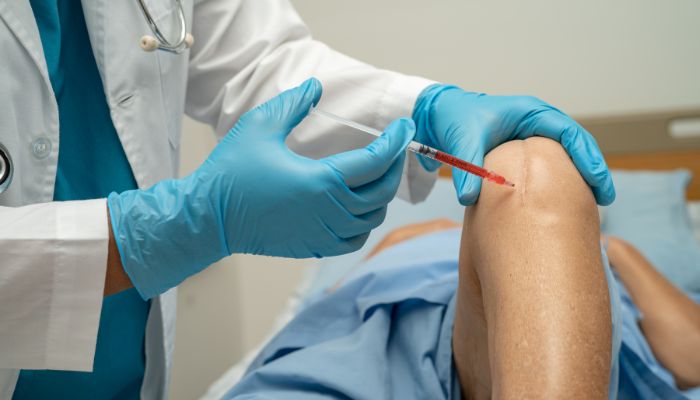
PRP Therapy
PRP therapy is a medical treatment that involves using a person’s own blood to promote healing and treat injuries, particularly in musculoskeletal and joint-related conditions. The treatment involves isolating platelet-rich plasma (PRP) from the patient’s blood and reintroducing it into the body to stimulate tissue repair and reduce inflammation.
How PRP Therapy Works
- Blood Collection: A small amount of the patient’s blood is drawn.
- Centrifugation: The blood is placed in a centrifuge to separate the platelets from other components like red and white blood cells.
- Platelet-Rich Plasma: The resulting plasma, which is rich in platelets (and growth factors), is collected for injection.
- Injection: The PRP is injected directly into the area of injury or damage, such as a joint, tendon, or muscle.
Conditions Treated with PRP Therapy
- Tendon Injuries: Tendonitis or tears, such as tennis elbow or Achilles tendon injuries.
- Arthritis: To reduce inflammation and pain in joints, particularly in osteoarthritis.
- Ligament Injuries: Sprains or tears in ligaments, such as in the knee or ankle.
- Muscle Injuries: Strains or tears in muscle tissue.
- Chronic Pain Conditions: Particularly those involving soft tissue damage and inflammation.
- Hair Loss: PRP is also used in dermatology for hair restoration (e.g., treating male or female pattern baldness).
Benefits of PRP Therapy
- Accelerated Healing: PRP stimulates cell growth and tissue regeneration, leading to faster recovery times.
- Reduced Inflammation: It helps reduce swelling and pain by modulating inflammatory responses.
- Non-Surgical: It provides an alternative to surgery for many musculoskeletal conditions.
- Minimal Side Effects: Since the treatment uses the patient’s own blood, the risk of allergic reactions or complications is minimal.
- Natural Treatment: Encourages the body’s natural healing process without synthetic medications.
PRP therapy offers a promising, minimally invasive treatment option for a wide range of injuries and conditions, particularly for joint, tendon, and ligament repair. It is a natural method of healing, leveraging the body’s own healing capabilities to stimulate tissue repair and reduce pain. However, its success can vary, and it should be considered as part of a broader treatment plan under the guidance of a qualified healthcare provider.